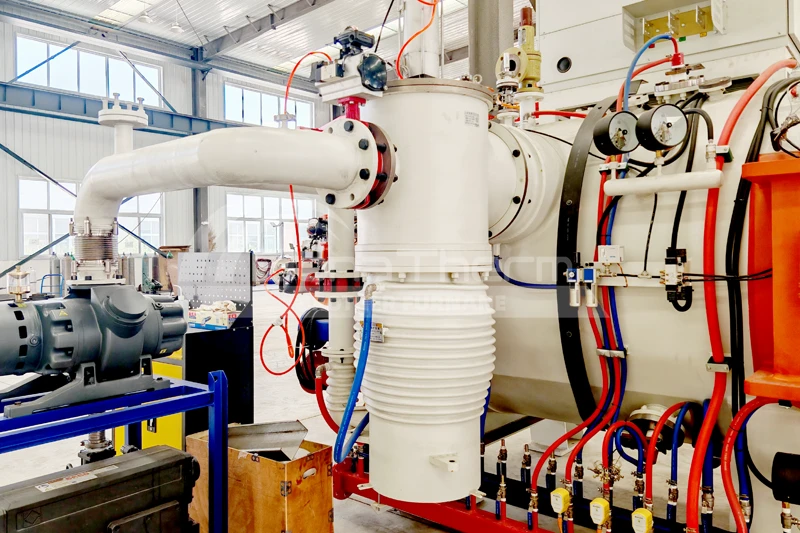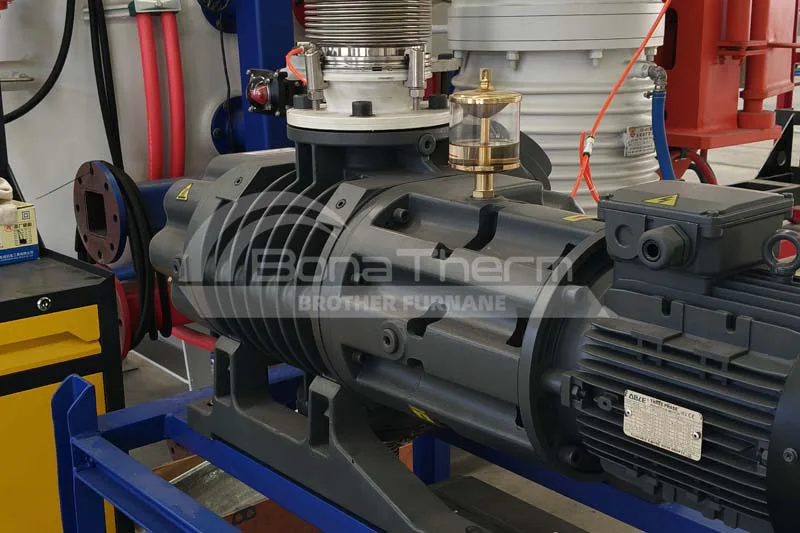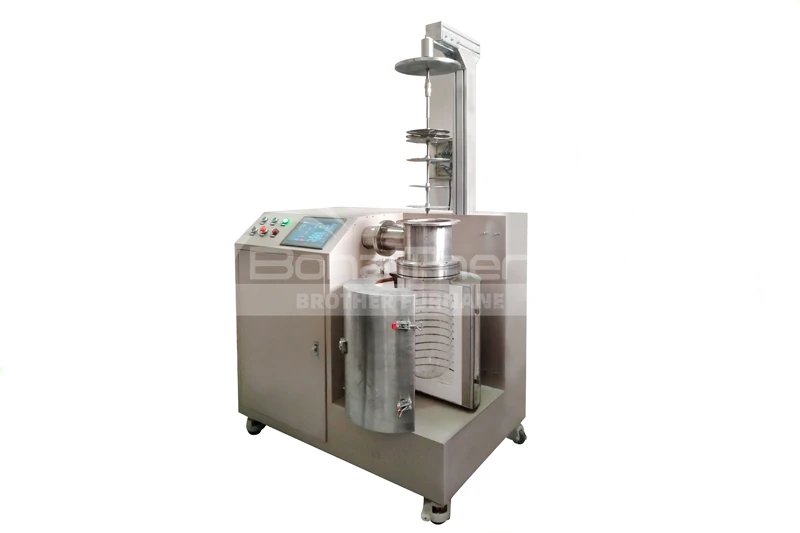How to Operate a Vacuum Gas Quenching Furnace
In metal processing, a vacuum gas quenching furnace is widely used as an
efficient and precise heat treatment equipment due to its superior
performance.
The vacuum gas quenching furnace is a kind of high-tech machine used for metal heat treatment, and its main function is to heat and quench the metal in a vacuum environment.
Compared with the traditional air quenching furnace, the vacuum gas quenching furnace avoids oxidization and decarburization of the metal surface by removing the oxygen in the air, which significantly improves the hardness, strength, and wear resistance of the metal parts.
This technology is particularly suitable for metal treatment with high precision and performance requirements, such as aerospace, automotive manufacturing, mold processing, and other industries.
As a professional manufacturer of vacuum gas quenching furnaces, Brother Furnace knows that the quality and performance of the equipment directly affect the quality of the final product.
In this article, we will introduce the operation of the vacuum gas quenching
furnace. We hope this article can provide you with practical guidance.
Main Components of a Vacuum Gas Quenching Furnace
Furnace Structure
The furnace structure is the core structural part of a vacuum gas quenching furnace, which is mainly made of high-strength heat-resistant materials. The design of the Brother Furnace is carefully optimized to provide excellent thermal stability and corrosion resistance.
The internal structure of the furnace is precise to ensure uniform heating and a stable working environment. The vacuum quenching furnace adopts a multi-layer insulation design, which effectively reduces heat loss and improves energy efficiency.
Heating System
The heating system is another important part that determines the performance of the vacuum gas quenching furnace. It usually includes electric heating elements or high-frequency induction heating devices.
Brother Furnace adopts advanced heating technology, which is able to heat the metal parts to the required processing temperature in a short time with a uniform and stable heating process. This efficient heating not only shortens the production cycle but also improves the quality consistency of the treated parts.
Vacuum System
The vacuum system is a key component of the vacuum quenching furnace and is responsible for removing gases from the furnace to create a stable vacuum environment. The vacuum gas quenching furnace uses a high-performance vacuum pump, which can quickly achieve a high vacuum level, ensuring that the gas is discharged thoroughly during the treatment process and reducing the contamination of the metal parts.
Cooling System
Cooling systems are used to quickly reduce the temperature of the metal parts after the quenching process. The vacuum air quench furnace is equipped with an efficient air cooling system.
For air cooling, high-purity nitrogen or high-purity argon gas is filled so that the gas is uniformly sprayed from the graphite nozzle to the workpiece through the air duct flow device, resulting in uniform forced cooling of the workpiece. The design of the cooling system takes full consideration of energy saving and environmental protection, and can efficiently reduce energy consumption.
Control System
The control system is the core part of the operation of the vacuum quenching furnace, which is responsible for setting and monitoring the process parameters of heating, vacuum, and cooling.
Brother Furnace has equipped the vacuum gas quenching furnace with an intelligent control system that supports precise temperature control and process recording. This ensures an efficient and accurate heat treatment process.
Operation Procedures of Vacuum Gas Quenching Furnace
1. Preparation Stage
Before starting the vacuum gas quenching furnace, a series of preparatory work needs to be carried out. Firstly, check whether the power connection of the machine is normal and make sure that the cables and plugs are not damaged.
Then, check whether the vacuum system is intact, including the operating
status of the vacuum pump. Next, check the status of the heating system and
cooling system to ensure that all components are working properly. Finally,
check the set parameters of the control system to ensure that they meet the
processing requirements.
2. Charging
Loading is a critical step in the operation. When loading metal parts, it is necessary to pay attention to even placement to avoid excessive stacking or contact. In order to ensure the consistency of the heating and cooling process, the appropriate charging method should be selected according to the treatment requirements.
For example, for larger metal parts, it is recommended to use a special loading jig to avoid uneven treatment due to uneven weight.
3. Setting Parameters
Parameters such as heating, holding, vacuum, and cooling rate are set through the control panel. Brother Furnace is equipped with an advanced control system for the vacuum quenching furnace, which supports a variety of preset modes and customized settings.
Operators can select the appropriate treatment program according to the material and heat treatment requirements of the metal parts. Meanwhile, the system provides real-time data monitoring and alarm functions to ensure the safety and stability of the treatment process.
4. Start Heating
After starting the heating program, the temperature inside the furnace will gradually rise to the set value. Temperature control during the heating process is very critical.
The vacuum quenching furnace adopts high-precision temperature sensors and a control system, which can monitor and adjust the temperature inside the furnace in real-time to ensure that each batch of metal parts achieves the expected treatment effect.
5. Vacuum Extraction
During the heating process, the vacuum system will gradually extract the gas
inside the furnace to form a stable vacuum environment. The vacuum pump of
Brother Furnace is characterized by high pumping speed and high vacuum degree,
which can effectively remove oxygen and moisture in the air and prevent
oxidation or decarburization on the surface of metal parts.
6. Quenching
When the temperature in the furnace reaches the set value, the quenching process begins. Temperature and time control in the quenching process have an important impact on the improvement of metal properties.
A vacuum metal quenching furnace can accurately control the quenching temperature and time according to the characteristics of different materials to ensure that the hardness and strength of the metal parts reach the best state.
7. Cooling
After quenching is completed, the cooling system is activated to rapidly reduce the temperature of the metal parts. Adjustment of the cooling rate can be optimized for different materials and treatment requirements. The flexible design of the cooling system of the gas quenching furnace enables efficient cooling with reduced energy consumption and environmental impact.
8. Charging
After the cooling process is complete, the furnace door is opened to remove the metal parts. Safety equipment is required to avoid burns caused by the high temperatures. After removal, subsequent inspection and processing can be carried out to ensure that the metal part meets the design requirements.
Vacuum Gas Quenching Furnaces: Excellent Heat Treatment Machines
Improvement of Metal Properties
By quenching in a vacuum environment, a vacuum air quenching furnace can
significantly increase the hardness and strength of metal parts. By controlling
oxidation and decarburization during the quenching process, the equipment
ensures that the surface of the metal is smooth and free of porosity and
cracks.
The results are particularly suitable for applications requiring high strength and wear resistance, such as aerospace components, automotive parts, and mold making.
Energy Savings
Due to the high heating efficiency of the vacuum quench furnaces, energy consumption can be reduced. The equipment's highly efficient heating system and good thermal insulation design can effectively reduce energy consumption. Brother Furnace helps customers reduce operating costs and improve production efficiency through optimized design and energy-saving technologies.
Reducing Environmental Pollution
The operation process of the vacuum gas quenching furnace is free of harmful gas emissions, which is in line with environmental protection requirements. This environmentally friendly feature makes it an ideal choice for green manufacturing. By reducing the emission of pollutants, it not only protects the health of the operators but also meets the high environmental standards of modern industry.
Brother Furnace: Your Best Partner for Heat Treatment Furnaces
Through the detailed introduction of this article, we hope you have a deeper
understanding of the vacuum air quenching furnace. As a professional
manufacturer of vacuum gas quenching furnaces, Brother Furnace is committed to
providing high-quality equipment and services to meet customers' needs in metal
heat treatment.
Brother Furnace's vacuum gas quenching furnaces not only have superior performance but also provide you with more efficient and reliable solutions through advanced technology and environmentally friendly design.
If you are interested in our products, please feel free to contact us. Brother Furnace is looking forward to cooperating with you to provide the best equipment to support your production.











